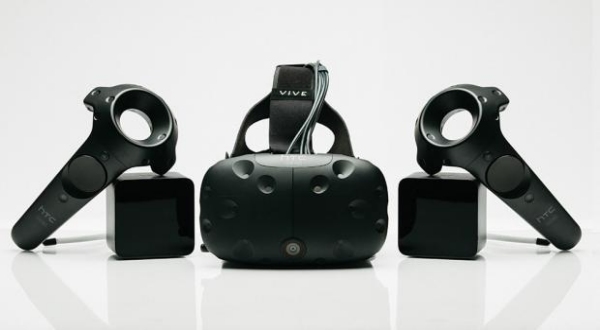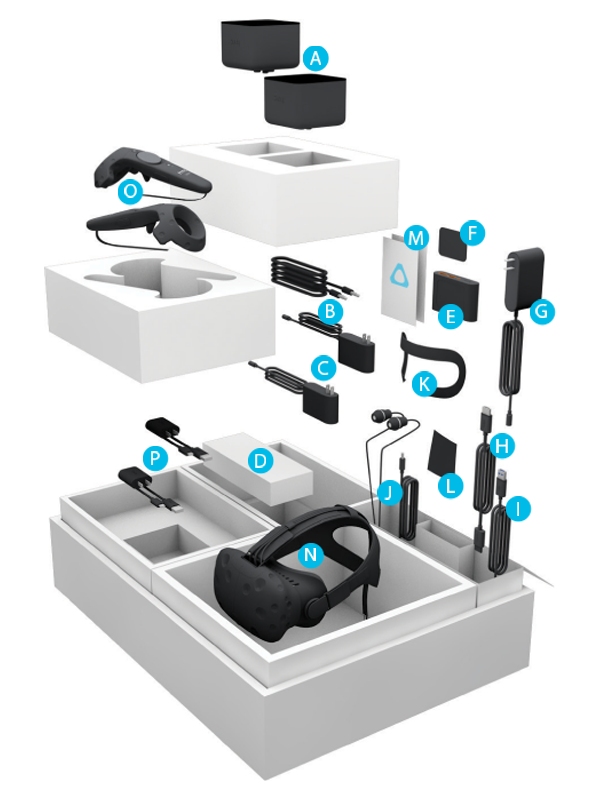Here's Why Setting Up The HTC Vive Is Going To Be A Nightmare

The HTC Vive is prepping for release next week. The pre-orders for the headset have been live for quite some time. While gamers and VR enthusiasts may be excited about the launch, setting it up, configuring it, and even unpacking it could be a real nightmare.
It might seem like hyperbole to say it's a “nightmare”, but Shacknews rolled out all of the components that comes with the Vive as well as pointing out the user manual and the complexity in setting up the VR HMD that might give even the most ardent of tech aficionados a slight moment of pause as they peruse through all of the different components that come with the peripheral.
If you think this is all about smoke-blowing, just check out all of the components listed below, along with an image to explain what they do.

A – Base station x 2
B – Sync cable
C – Base station power adapter x2
D – Mounting kit
Your Daily Blend of Entertainment News
E – Link box
F – Link box mounting pad
G – Link box power adapter
H – HDMI cable
I – USB cable
J – Earbuds
K – Alternate face cushion (narrow)
L – Cleaning cloth
M – Documentation
N – Headset with 3-in-1 cable and audio cable
O – Controller (with lanyard) x 2
P – Micro USB charger x 2
Some of these leave me a little confused. Like why is there an alternate face cushion? And then there are the link box mounting pad and cleaning cloth. I suppose for the price of entry a cleaning cloth is a nice complimentary gesture, but is it necessary? The link box mounting pad also seems redundant. But again, for $800 I suppose it's better to get extra unnecessary things than not have them at all.
One thing that the Shacknews article mentions that I did think was cool, is that despite all of these components and cables, the HTC Vive's controllers are configured so that if the batteries die while you play wirelessly, it's possible to plug them into the USB port in the Vive headset itself to continue to use them while the batteries recharge. That's an $800 feature right there.
It's crazy because if you check out the official HTC Vive user manual, there are nearly 20 pages just covering the unboxing process... that doesn't even include getting started using the device.
Supposedly the HTC Vive is at the very top end of the virtual reality experience, with high-end 3D positional tracking and high-resolution VR rendering resting at the core of the device's functionality.
The positional tracking is done using two infrared base stations that track the movement of the wireless controllers and the headset itself. For comparison purposes, the PS VR uses the PlayStation Camera for positional tracking. The Vive's base stations plug into each other and also plug into the wall. The user manual instructs users to place them in areas that define the “play area” and they suggest that users don't move them once they've been setup and the software for the play area has been configured.
It's not quite as difficult setting up the HTC Vive as say installing and setting up a prototype motherboard running a Linux OS, but it's definitely more difficult than simply plugging in and playing the headset right out of the box.
The Vive is due for release on April 5 and will cost $800.
Staff Writer at CinemaBlend.

